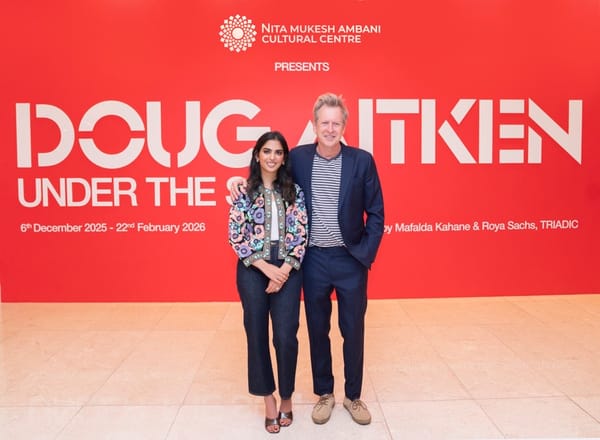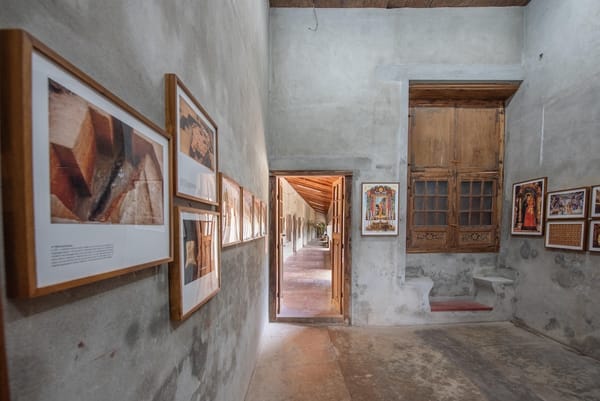Umesh S.: 'Sprouting Bodies' at Chemould CoLab
In his exhibition 'Sprouting Bodies' at Chemould CoLab, artist Umesh S. transforms rage, memory, and agrarian loss into a visceral, multidisciplinary practice spanning sculpture, performance, and installation rooted in Bhojpur’s farming traditions.
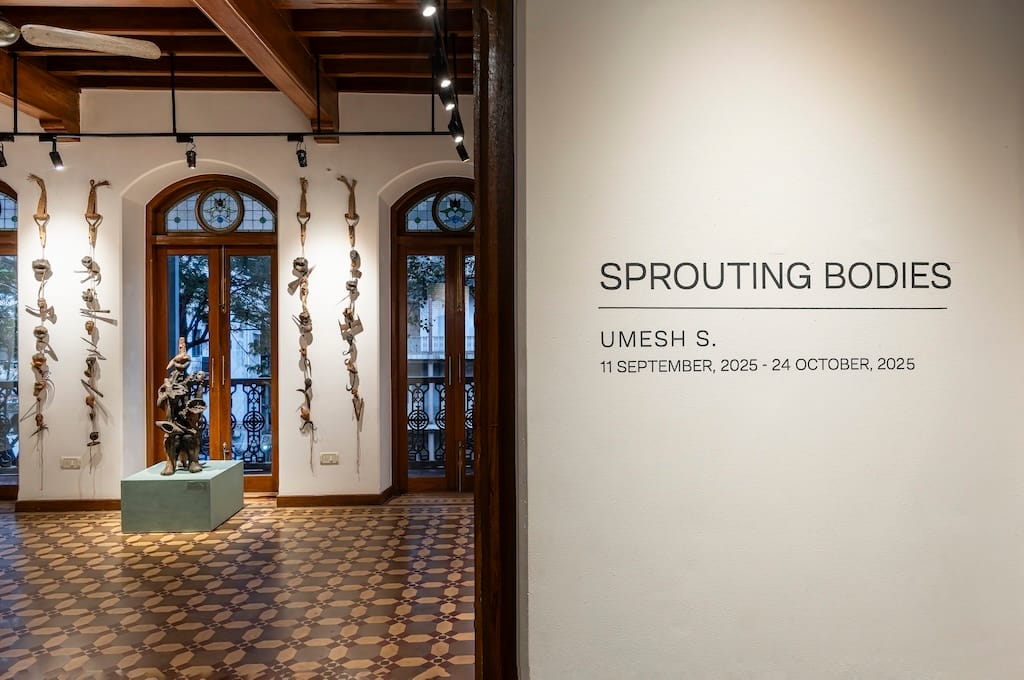
Born in 1992 in Bhojpur, Bihar, artist Umesh S. grew up working the land alongside his family, inheriting generations of agrarian knowledge and intimacy with the soil. When his family, like countless others, was forced to abandon farming, it marked not just the loss of livelihood but the severing of an entire way of knowing — a rupture that continues to shape his art. His practice carries the weight of this displacement, transforming grief and anger into an arresting visual language that spans painting, sculpture, printmaking, performance, and installation.
Having roots in Bhojpur and currently based in Varanasi, Umesh draws on materials embedded with agrarian memory: obsolete tools, coiled ropes, terracotta, and fragments of farming equipment, recontextualising them within the gallery to evoke both absence and endurance. His terracotta sculptures, in particular, are charged with a visceral defiance: sprouting, contorted forms that recall the body’s labour and the land’s resilience. Across mediums, his art resists romanticised depictions of rural life, instead confronting viewers with a raw, unsentimental portrayal of loss and resistance.
In this conversation, Umesh reflects on the emotions that drive his work, his relationship to material and memory, and the complex legacies of farming that continue to shape his practice.

Nikhil Sardana: Your work carries an undercurrent of anger and urgency about the decline in respect for farmers’ knowledge and ways of life. How do you translate that emotion into your artistic process?
Umesh S.: I come from a family of farmers, and tending to the land has been part of my life for as long as I can remember. Farming is an indigenous knowledge passed down through three generations; it runs in our blood, almost like a gene embedded within us.
Like my family, there are many others who have been forced to give up their livelihoods. Though the knowledge of farming remains deeply rooted within us, we now find ourselves unable to practise it or carry it forward.
The strongest emotions I feel about this loss are anger and pain, and they manifest in my work. You see them in the open mouths of my sculptures, in their distressed expressions, and in the collective protests I depict through faces crying out in unison.
The colour palette I use also reflects this collective state of mind: muted, earthy tones of brown, orange, and black, colours that have surrounded me and generations of farmers before me.
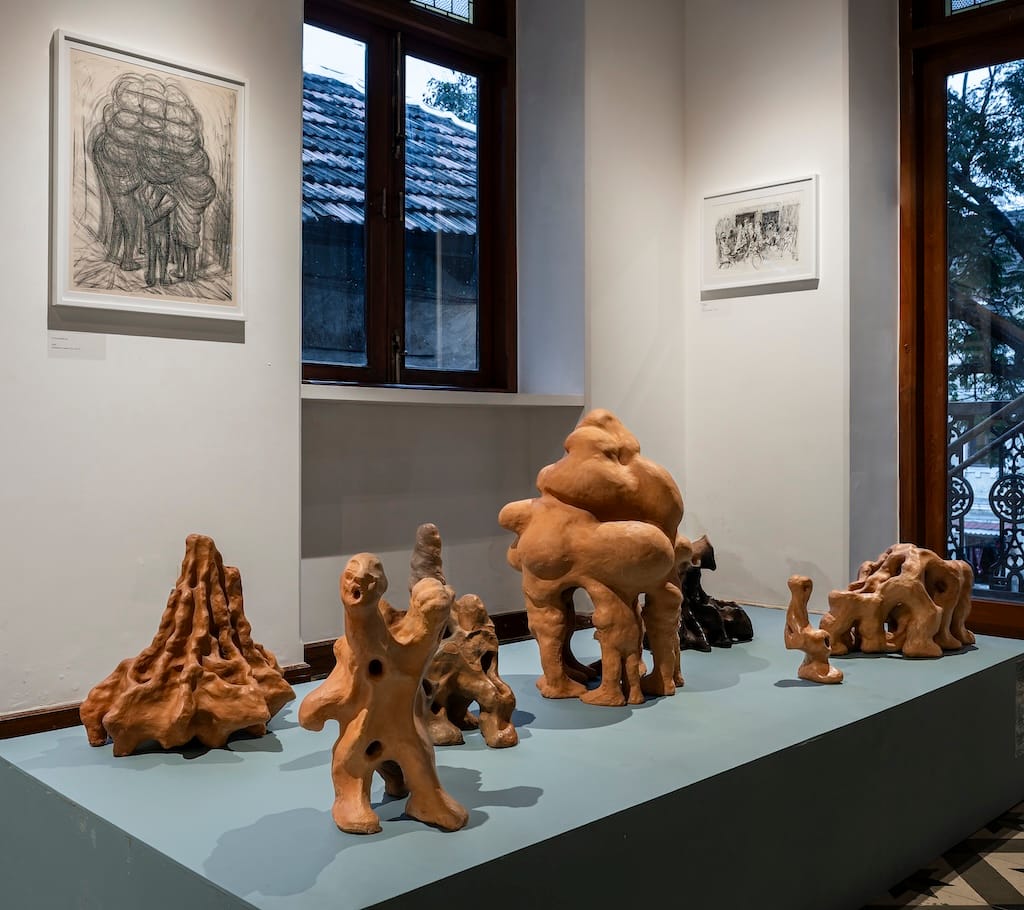
NS: Many of your pieces incorporate objects and materials sourced from Bhojpur and Varanasi. What role does the act of collecting and recontextualising these fragments play in your practice?
US: I’ve spent the last seven to eight years quietly collecting farming tools, objects that, to many, may seem ordinary but hold great value for me. Each district has its own unique tools, born from the specific demands of the soil and the climate of the land.
For farmers, these tools are more than implements; they are extensions of our bodies. The older tools, handcrafted with care, were remarkably effective, finely tuned to the land they worked upon. Today, mass-produced tools dominate the market, but they lack the intimacy, history, and soul of those once forged by farmers themselves.
It felt essential to give these tools their rightful space within my exhibition. This show is, at its core, about farming, and the tools are inseparable from that story. Many of the pieces on display have been collected over years; such tools can no longer be easily found and have almost disappeared from everyday life. In showcasing them, I hope to honour not just their utility but also their cultural and personal significance.
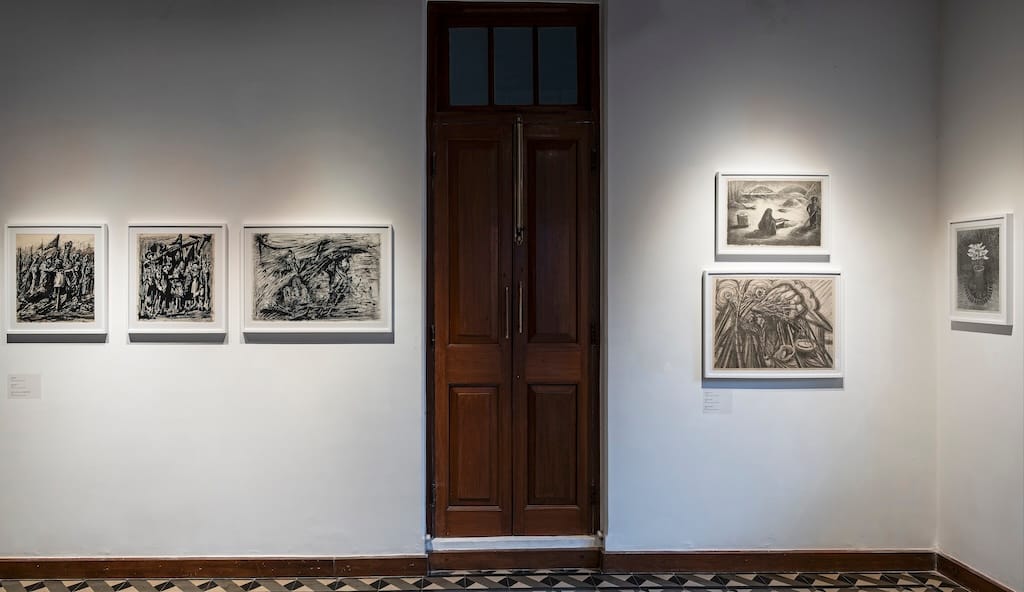
NS: Terracotta has a strong presence in this exhibition. What drew you to this material, and how do its earthy qualities shape the way you express agrarian memory?
US: Terracotta is a material I’ve known intimately since childhood; it was constantly around me as I grew up.
One of the clearest images from those years is of my mother shaping terracotta pots with her hands, making vessels to store rice and grains. Today, such terracotta pots have become rare, replaced by containers made from other, less personal materials.
Having grown up surrounded by terracotta, it was only natural that the material found its way into my artistic practice. I understand its temperament instinctively, the way it responds to touch, the way it holds form. Working with terracotta now is, in many ways, a continuation of that childhood dialogue, simply expressed in a new language.
Its accessibility in Banaras makes it even more personal, a familiar, grounding presence that connects my past to my present.
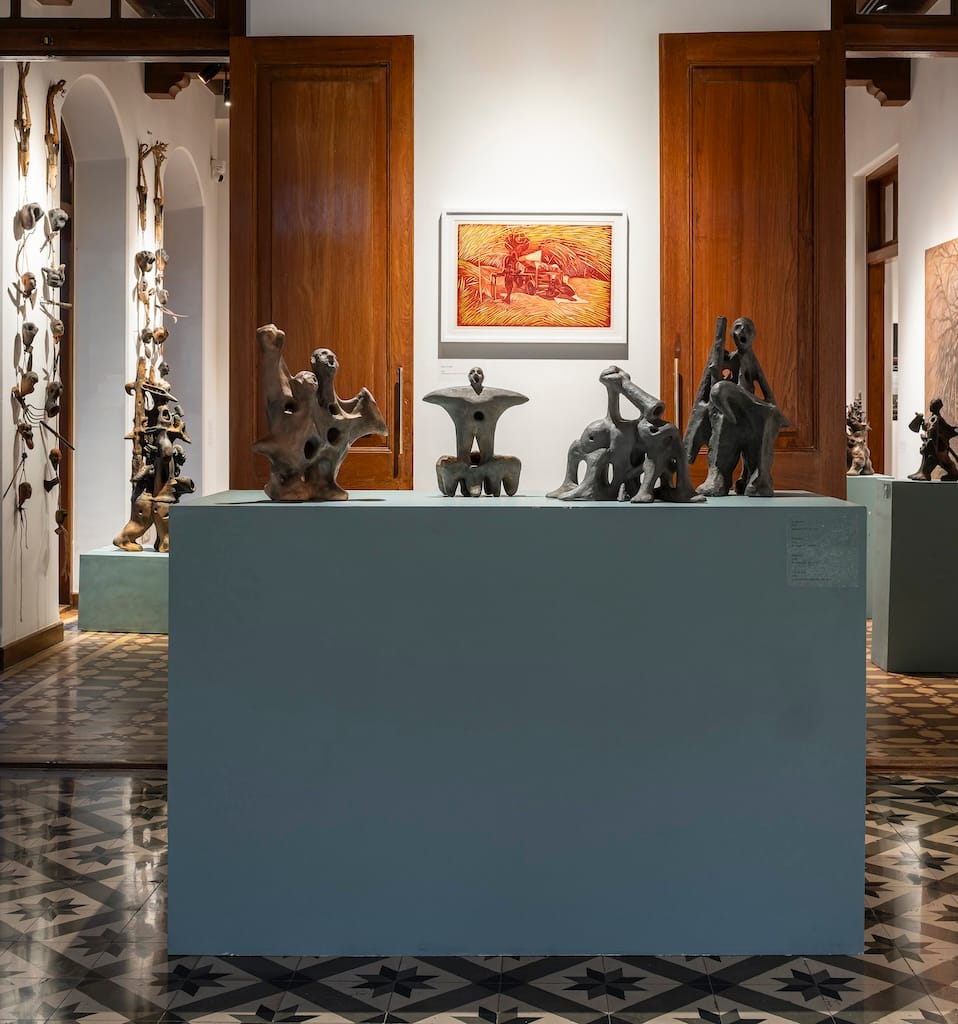
NS: You move fluidly across painting, sculpture, printmaking, performance, and installation. How do you decide which medium best serves a particular idea?
US: I decide the material based on the site; the choice is always very site-specific for me. Humans are made from dust and return to dust, and so the decision to make terracotta sculptures representing people came very instinctively.
Poetry recitation and live performances are also important parts of my repertoire, alongside sculptures, canvases, paper works, lithographs, and woodcut prints.
I enjoy experimenting with different mediums and often visualise how the work will look in my mind before I begin creating it.
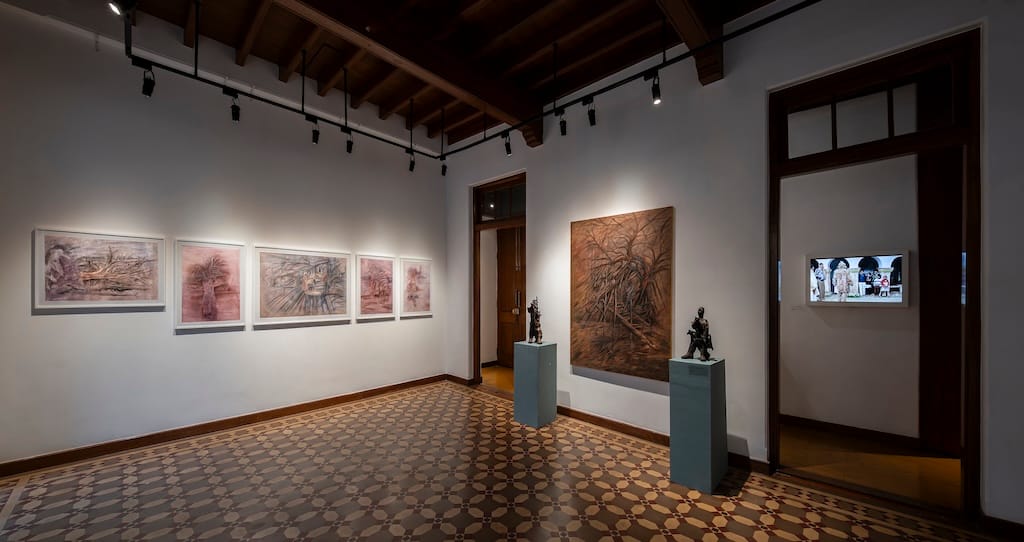
NS: Your work resists easy narratives of nostalgia or dispossession. Why is it important for you to challenge the way agrarian life is usually represented to urban audiences?
US: The farmers’ crisis in India is a profound and pressing issue. Corporate interests and large-scale agribusinesses have monopolised the market, driving up crop prices, yet the farmers themselves see little benefit from these increases.
Small-scale farmers, many of whom have worked the land for generations, are being systematically pushed out. Many have no choice but to abandon their ancestral livelihoods, seeking alternative work just to survive. This displacement is not just economic: it is deeply personal, a severing of identity, tradition, and connection to the land.
Through my work, I strive to embody this anger and resistance, giving form to the struggles and resilience of farmers across India.
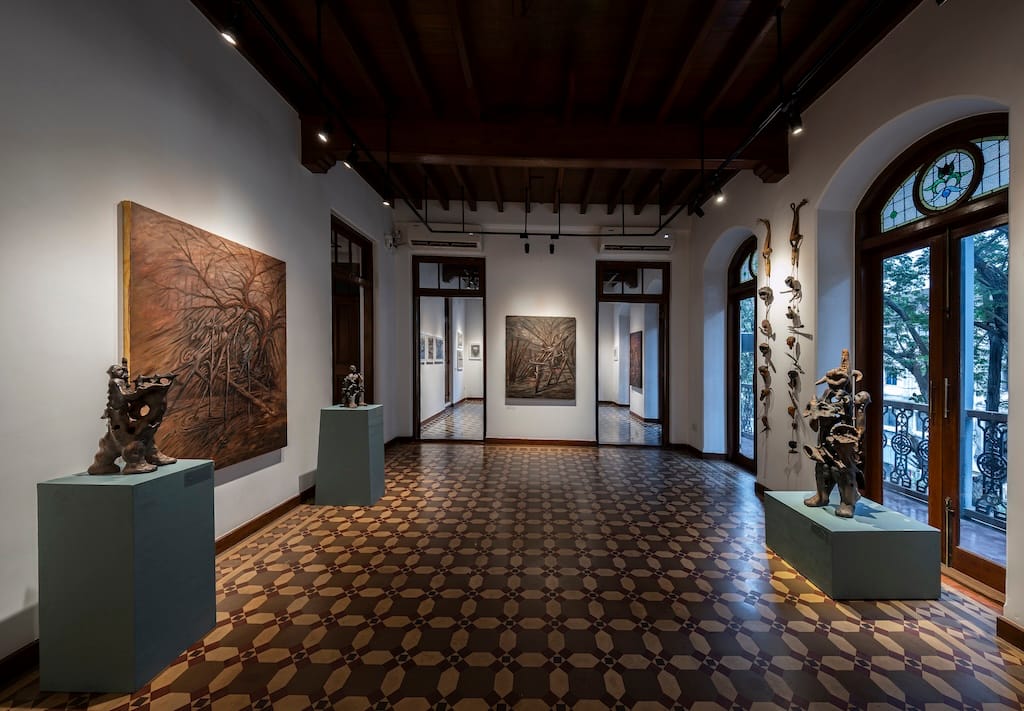
NS: Performance appears in your practice as well, often with the body as a site of resistance. How does this dimension relate to your more material-based works?
US: I’m unable to express everything I want to through canvas, paper, or even sculpture, and so I choose to expand my practice to include poetry recitation and live performance, allowing me to express myself as wholly as possible.
The immediacy of spoken poetry and live expression allows me to articulate what other media cannot.
Performing isn’t new to me. As a child, I often took part in village plays, standing on makeshift stages and discovering, even then, the extraordinary power of performance. It’s a medium where emotion flows directly between artist and audience, where presence itself becomes part of the work. That sense of live connection continues to move me deeply. I think of these performances as living artworks.
For me, working across mediums is essential. Each form holds a different kind of truth, and together they allow me to express the full range of what I carry within.
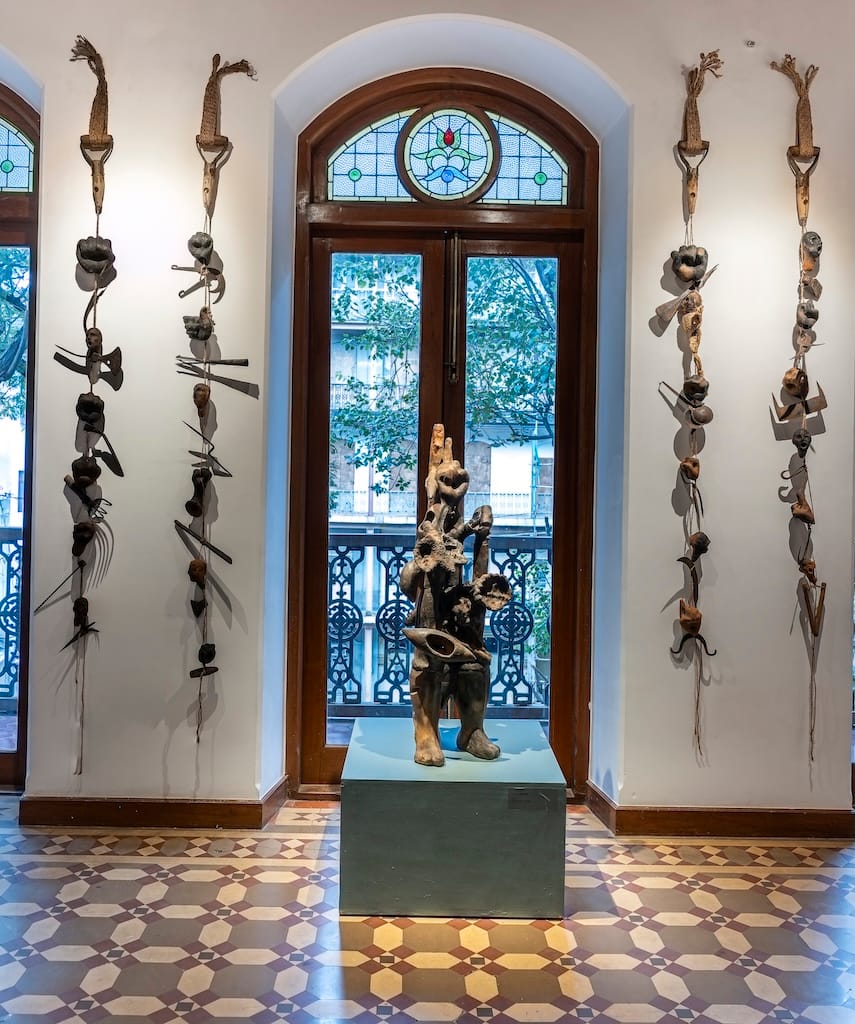
NS: Tools, ropes, and other remnants of farming recur across your art. Do you see them primarily as carriers of memory, or as transformed entities once they enter the gallery space?
US: Like tools, ropes have been integral to farming practices, and making them is something I’ve always enjoyed. Given their crucial role in agricultural life, I wanted to acknowledge and honour them in my work.
In our village, we would once weave charpais (traditional cots) using these ropes. Today, similar pieces are sold at high prices in urban stores; people no longer come to us for them. As a result, the traditional knowledge of making charpais has slowly disappeared. Through my show, I wanted to give this lost craft the recognition it deserves.
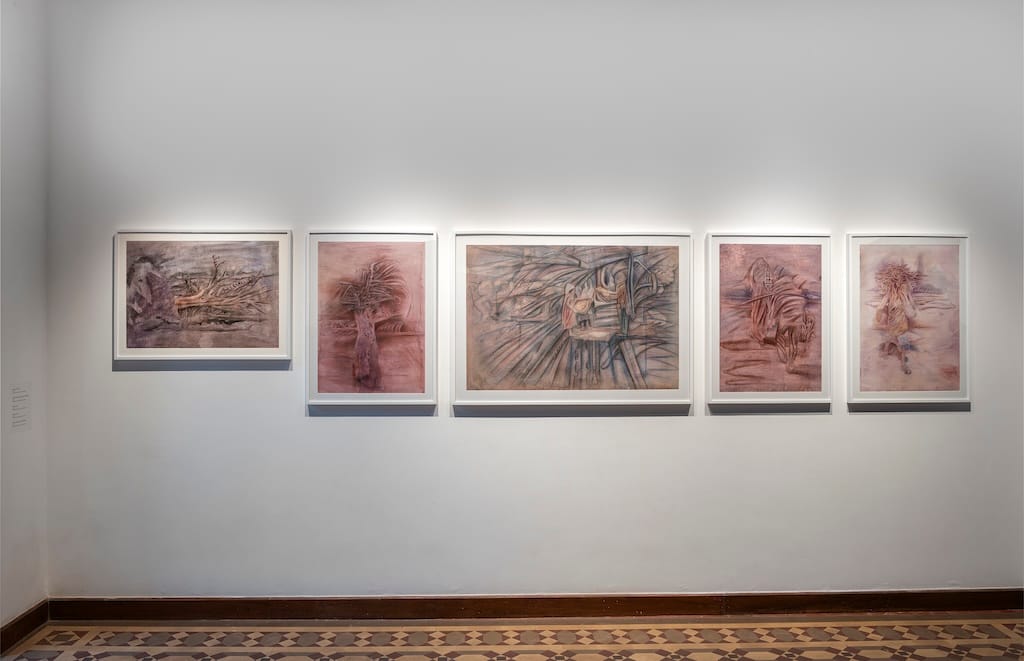
NS: As you look to the future, do you see your practice continuing to centre on agrarian themes, or are you beginning to explore new directions?
US: Farming will always remain central to my work, it’s something I share a deep personal connection with. Having been a farmer myself, I’ve lived that life and experienced both its challenges and its rewards. It’s a part of who I am and will continue to shape my practice.
I also share a strong bond with rivers. I grew up playing and bathing in them, and I currently live near a jungle, having spent my childhood beside another. I hope to someday explore a comparison between the two in my work. I feel deeply drawn to trees and rivers and would like to bring this connection into my art.
Another concern I am interested in exploring is the increasing presence of arsenic in water and the larger issue of water pollution. These ecological concerns are not only personally significant but also integral to my PhD research on ecological art practices.
Sprouting Bodies, a solo exhibition by Umesh S., is on view at Chemould CoLab, Mumbai, until 24 October.



